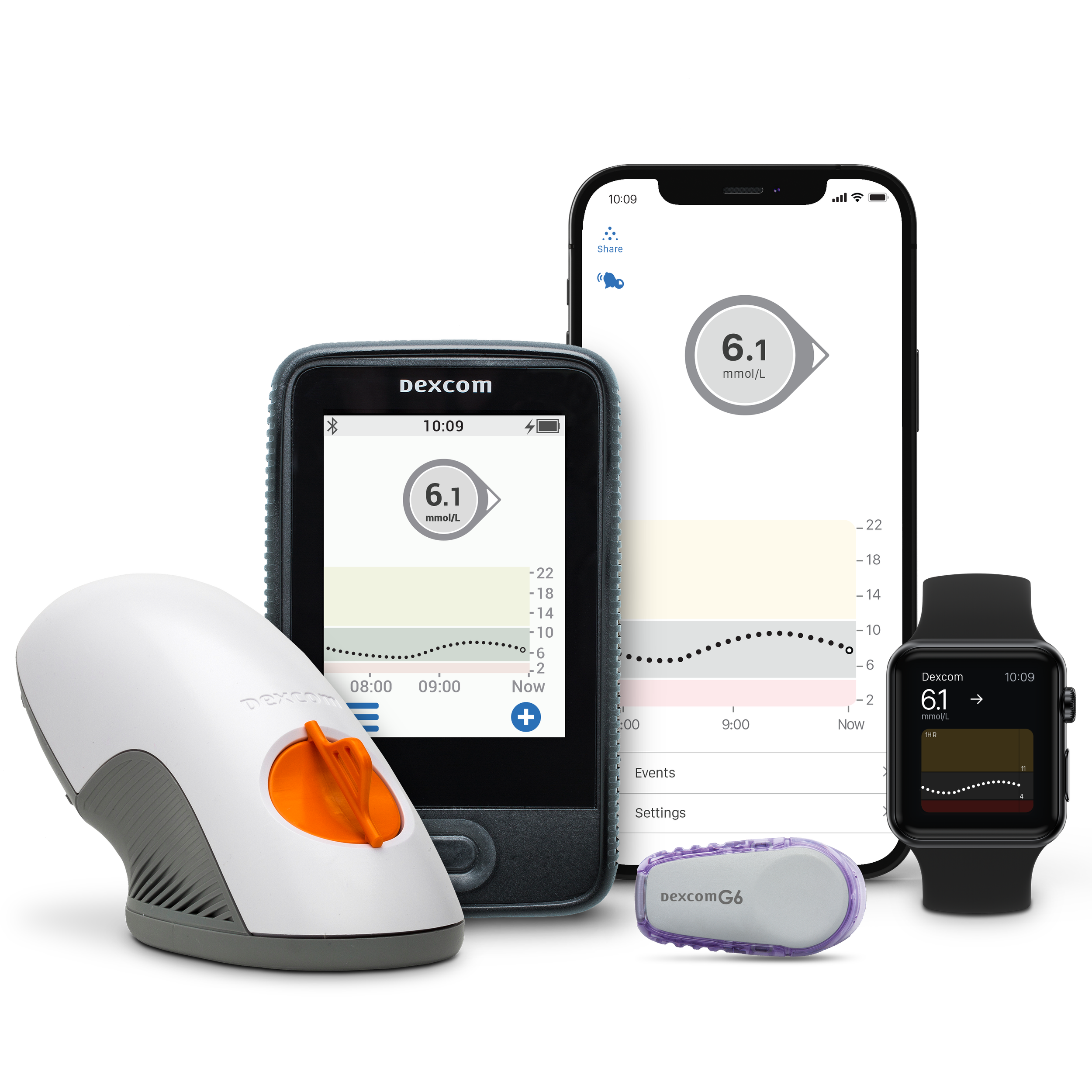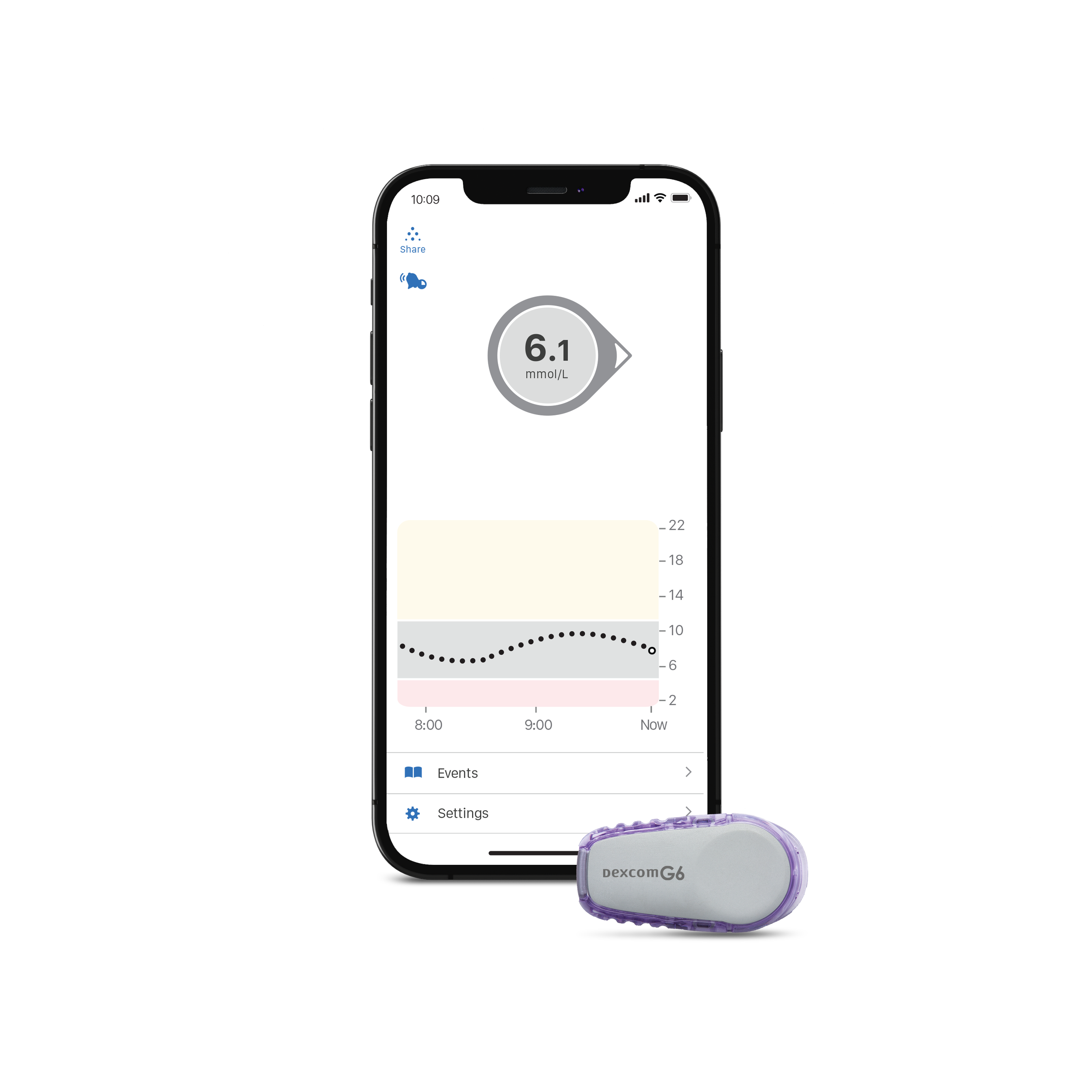Is the Dexcom G6 Continuous Glucose Monitor Right for You? (Benefits and More)
Takeaways
One of the most advanced CGM systems in the market, the Dexcom G6 provides highly accurate readings that could improve glucose monitoring and optimize diabetes care.
The Dexcom G6 has several benefits: it’s safe for use in pregnant women and children, factory-calibrated (in turn, doing away with the need for finger prick tests), plus resistant to interference from acetaminophen and imaging procedures.
Individuals without diabetes could use the Dexcom G6 to identify trends in their blood glucose levels—and, in turn, learn how to optimize their levels—enabling peak physical and mental performance.
Dexcom G6 is now available in the NOVI store!
CGM systems are immensely popular among people with and without diabetes for a good reason. It provides accurate, real-time glucose level data without the hassle and pain of finger pricks.
For individuals without diabetes, such data may help improve dietary behavior plus optimize physical and mental performance. For individuals with diabetes, on the other hand, the around-the-clock glucose readings have enabled their respective healthcare providers to make more informed treatment decisions.
While the benefits of using a CGM are clear, picking a suitable system—out of so many available in the market—for your unique needs may not be. Well, to that, we say: why not check out the Dexcom G6? It's one of the most advanced CGM systems currently available and is slated to launch in Singapore soon.
To that end, this article explains how it works, its benefits, and how to use it so you can decide if it’s the right CGM sensor for you.
What is the Dexcom G6?
The Dexcom G6 is the latest CGM from the San Diego-based tech giant DexCom, Inc. It is an upgraded version of the Dexcom G5 system.
The Dexcom G6 app is compatible with the following devices:
Select models of Samsung, LG, Google, and Huawei smartphones
iPhone 6S and above
Apple Watch
Not sure if your device is compatible with the Dexcom G6? Click here to find out.
How does the Dexcom G6 work?
The Dexcom G6 CGM consists of the following:
Water-resistant sensor: Two hours after insertion beneath the skin, the sensor (about the size of a 50 cent coin) begins continuously measuring blood sugar levels.
Transmitter: The transmitter sends real-time blood glucose readings via Bluetooth to the Dexcom CLARITY app on a smartphone every 5 minutes.
Dexcom CLARITY: It’s worth noting that the Dexcom CLARITY isn’t simply an app; instead, it’s a web-based software accessible on a computer, too. Dexcom CLARITY provides information about current and historical glucose values—enabling both users and their healthcare providers to identify patterns and trends to find ways for better glucose level management.
How to use the Dexcom G6 continuous glucose sensor
Below is a step-by-step guide to using the Dexcom G6.
Step 1: Insert the sensor
First, wash your hands with soap, then rinse well under clean, running water. Dry using a clean towel.
Choose the sensor insertion site. Dexcom G6 sensors may be worn on the upper arm, abdomen, or upper buttocks; ensure that your chosen area is at least 3 inches away from the insulin pump infusion set or injection site. Avoid bony areas, such as ribs and hipbones, and areas with scars, tattoos, or irritation. Also, avoid using any one insertion site 2 times in a row.
Swab the insertion site with alcohol wipes and let dry.
Remove both adhesive labels on the sensor. Avoid touching adhesive.
Place the applicator horizontally on your skin.
Fold and break off the safety guard.
Push and release the orange button to insert the sensor.
Remove the applicator, and that’s it: the sensor is in!
Step 2: Attach the transmitter
Remove the transmitter from the box.
Clean the bottom of the transmitter with an alcohol wipe and let dry. Don’t touch the metal dots.
Slide the transmitter tab into the slot at the narrower end of the holder.
Push the wide end of the transmitter until it snaps into the holder.
Rub around the patch three times to smooth out any wrinkles (this helps keep the patch stick to the skin).
Step 3: Set up the Dexcom CLARITY app
Turn on Bluetooth and notifications on your smartphone. Depending on your device, download the app from either the App Store (i.e., iOS) or Google Play Store (i.e., Android).
Follow the steps below:
Enter username and password. If you are using it for the first time, follow the onscreen instructions. If not, the G6 app imports existing settings.
Tap “Let’s Get Started”.
You will see legal and safety information. Tap appropriate answers to view instructional videos or move forward.
New users: Review and set up alarm/alerts. Tap “Next” to move forward.
Set your Low Alert. You get an alert if your glucose drops below the number you set. The default is 70 mg/dL. Tap “Save”.
Set your High Alert. You get an alert if your glucose rises above the number you set. The default is 250 mg/dL. Tap “Save”.
Apple users: when asked, tap “Allow” to receive alarm/alerts. Android users: when asked, allow Do Not Disturb Permission.
If the app asks permission to access your device location, tap “Allow”.
Enter the sensor code, which is on the applicator’s adhesive label. You can do it manually or by taking a picture of the 2D barcode.
Enter transmitter SN. You can do it by typing in the SN or taking a picture of the 2D barcode on the transmitter box. The transmitter SN is on the transmitter box or the back of the transmitter.
Confirm correct SN and tap “Save”.
After a 2 hour warmup period, the Dexcom CLARITY app will start to show glucose results. Beyond indicating the current glucose level, you could also access up to 24 hours of tracked data by turning your smartphone horizontally and scrolling back accordingly.
If it’s connected with an automated insulin dosing system, a rise in blood sugar will cause the pump to release insulin. Users need to replace the G6 sensor every 10 days.
This video demonstrates how to apply the Dexcom G6 sensor.
Top 5 benefits of Dexcom G6
Besides being pain-free, easy-to-use, and water-resistant, the Dexcom G6 continuous glucose sensor offers several other benefits, including:
Pregnancy-safe: Glucose levels tend to grow during pregnancy, a condition known as gestational diabetes. Notably, the risk appears to be higher among Asians—including Singaporean women—compared to the global population. In 2020, a team of American researchers concluded that the Dexcom G6 CGM is safe and accurate in pregnant women with type 1 diabetes, type 2 diabetes, or gestational diabetes.
Resistant to interference from acetaminophen: Acetaminophen is a routinely used pain-killer that can falsely elevate CGM readings. Luckily, the Dexcom G6 system is resistant to interference from acetaminophen.
Resistant to interference from X-rays: According to a 2021 study, exposure to X-rays, magnetic fields, and radiofrequency is unlikely to affect the system’s functionality and data integrity.
No finger prick calibration: The system is factory-calibrated, doing away with the hassle and pain of finger prick tests.
Smart alert settings: The Dexcom G6 comes with 2 types of factory-set alerts. The first is the “urgent low” alarm, which sounds when the CGM reading is at or below 3.1 mmol/L (55 mg/dL). The second is the “urgent low soon” alarm, which sounds when the system predicts readings to fall below 3.1 mmol/L (55 mg/dL) within 20 minutes. The Dexcom G6 also allows users to set 2 user-defined alarms—the “low” alarm and the “high” alarm—based on what low and high blood glucose levels look like for them, respectively.
You may want to learn more about NOVI Magnum, a comprehensive program that helps you take control of diabetes through the use of a continuous glucose sensor.
Are Dexcom G6 readings accurate?
The accuracy of the Dexcom G6 has been extensively studied. Based on the findings, we may say the device is one of the most accurate systems currently available.
For example, a 2021 study concludes that the Dexcom G6 CGM is a dependable tool for hospital use in people with diabetes.
Likewise, another 2021 study on children after surgery to remove the pancreas notes that the device produces clinically acceptable values to make reliable clinical decisions. The Dexcom G6 system has also been shown to increase users’ “time in range” (3.9 to 10.0 mmol/L or 70 to 180 mg/dL) by 15% compared to non-users.
CGMs use a data metric called mean absolute relative difference (MARD). Lower MARD values (expressed as a percentage) indicate higher accuracy. Generally, CGMs with MARDs below 10% are considered accurate.
According to Dexcom, the G6 has an overall MARD of 9%. For reference, Abbott FreeStyle Libre has a MARD of 9.2%.
Interested in finding out how else the Dexcom G6 fares against the Abbott FreeStyle Libre? Then check out this in-depth comparison article.
Is the Dexcom G6 right for you?
The Dexcom G6 is a reliable tool for anyone with or without diabetes. Clinical trials have clearly shown that the device is appropriate for children, adults, and pregnant women with diabetes.
Besides, you may consider using it even if you don’t have diabetes. Understanding your glucose levels may help you optimize your diet and activity for peak physical and mental performance.
Dexcom G6 is now available at the NOVI Shop. 👇
This publication does not constitute an advertisement, and is intended solely for educational purposes. Please seek professional medical advice as to whether a health product would be appropriate for you.


